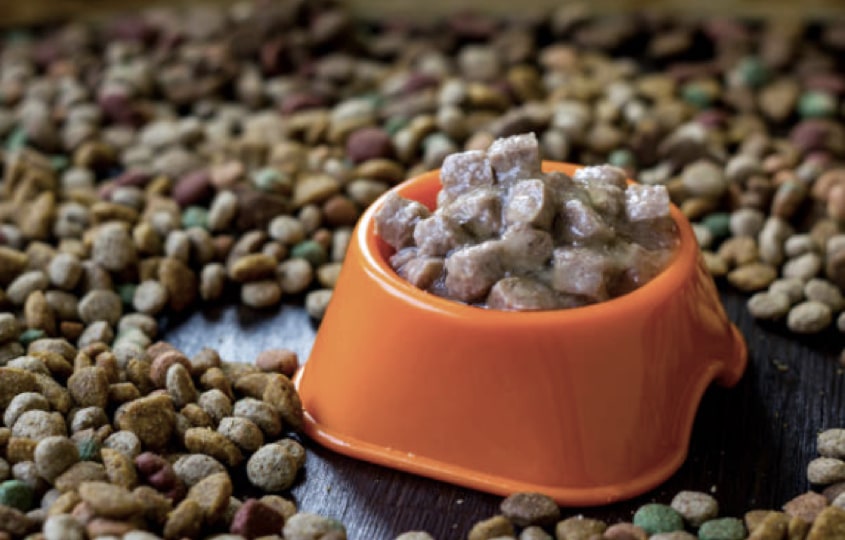It is not uncommon to hear dog parents asking whether to choose dry kibbles or wet food. Surely financial consideration, the dog’s preference and more factors are at play, but when we want to compare nutrient levels, we first need to know how to do an apple-to-apple comparison between dry and wet food.
You might feel confused or slightly alarmed when you see the vast differences between figures in guaranteed analysis listed on various dry and canned wet food. Let us give you an illustration: you have a healthy adult dog, and are looking at the below three pet food choices. By looking at the figures at face value, you would have thought 1) dry food C has the most protein than wet food A and B; 2) wet food A and B has less protein than the 18% of protein minimum requirement recommended by AAFCO. However, none is true.
| Nutrient | Wet food A | Wet food B | Dry food C |
|---|---|---|---|
| Crude Protein | 8% | 10% | 26% |
| Crude Fat | 3% | 5% | 12% |
| Crude Fiber | 1.5% | 1% | 4.5% |
| Crude Moisture | 82% | 76% | 10% |
Moisture in pet food varies greatly, with pet wet food typically contains 75%+ moisture while dry food is usually left 8% to 12% after manufacturing process. To make a meaningful comparison of nutrient levels, these dry and wet food should be expressed on the same moisture basis, namely dry matter or moisture-free basis. How?
Moisture-free conversion formula:
1. Assume 100% the whole nutrient level (it is easy to understand 100 means whole), after subtracting the moisture percent, you can get the Dry Matter value.
2. To compare protein levels, get protein percent off Guarantee Analysis and do this simple math: (Protein ÷ Dry Matter) x 100
| Wet food A | Wet food B | Dry food C | |
|---|---|---|---|
| Dry Matter | 18% (100-82) | 24% (100-76) | 90% (100-10) |
| Protein level on dry matter basis | 44% [(8÷18) x 100] | 42% [(10÷24) x 100] | 29% [(26÷90) x 100] |
Of course this simple analysis of the available nutrient information is only one small part of the whole consideration spectrum when it comes to choosing your diet for your dog. We will keep you informed and educated as how to not take things at face value. Stay tuned.
Source: US food & drug administration (FDA)
Hellodog does not provide medical advice, diagnosis or treatment. See more details here.
